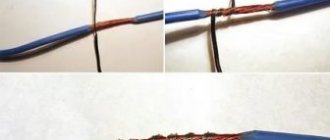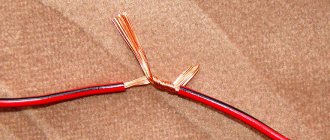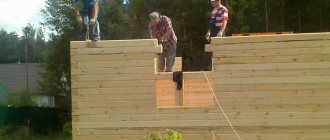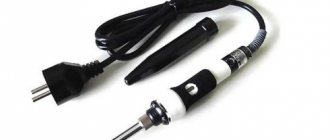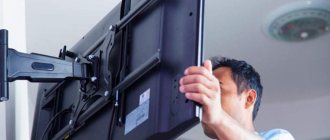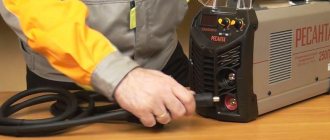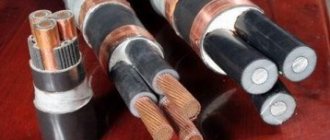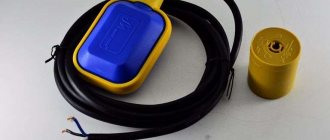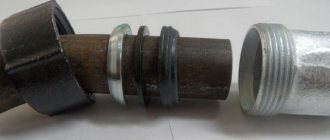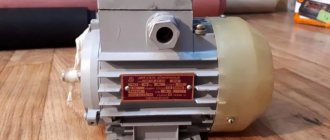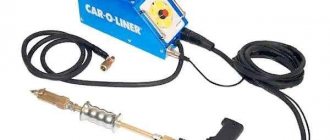To ensure that the power supply in your homes is always of high quality, uninterrupted and reliable, it is very important to correctly connect the wires during installation work. There are a lot of methods, we will consider each in detail separately with its advantages and disadvantages, with step-by-step instructions for performing switching. We will also pay attention to the eternal question of electricians - how to connect wires whose cores are made of different metals (for example, copper and aluminum).
Removing the insulating layer from the wires
I would like to immediately dwell on a question that will be common to any method. Before connecting the wires into a common electrical unit, they must be stripped of the top insulating layer.
This can be done using a mechanic's knife. This method is simple, but there is a high probability of damage to the conductor. To do everything correctly, you must strictly follow the step-by-step instructions:
- Place the wire on some flat surface (such as a table).
- Press it with your left index finger.
- With your right hand, take the knife and lightly press it into the insulating sheath of the wire. To avoid snagging the metal core, position it towards the cut at an angle. If the angle is right, there is a possibility of a circular cut in the core, as a result of which it may subsequently break.
- Hold the knife in this position. Using the index finger of your left hand, slowly twist the conductor one full turn, thus cutting the insulation around the entire circle.
- All that remains is to pull off the cut piece of insulation.
Professional electricians now necessarily have in their arsenal such a device as a stripper. This is a multifunctional tool that can be used to strip insulation from a wire or cut a cable. It can be simple, semi-automatic or automatic. The most important thing is that when stripping the insulation with a stripper, the conductor is not damaged. For each standard core diameter, such a tool has a calibrated hole with a cutting edge.
The length to which wire cores need to be stripped is different for each connection method.
We collect high-quality and reliable welding cables that will serve for years
A set of welding cables for manual arc welding includes two cables (wires), one of which has an electrode holder at the end, and the other a terminal for connecting to ground. As a rule, the standard set supplied with an inexpensive welding machine is not of the best quality and breaks down after several months of use. If you buy such a kit separately, then budget models also cannot boast of quality, while quite normal ones are comparable in price to the welding machine itself. Quite often there are models where the emphasis is on one of the three components, i.e. Either the electrode holder is of high quality, but the cable (wires) is so-so, or the wires are excellent, but everything else is not very good. Therefore, in order not to play roulette and not overpay, I suggest self-assembly from proven components. If you are interested, you are welcome...
Content
- Electrode holder:
- Power cables (wires):
- Ground clamp:
- Cable plug:
- Assembly:
- Conclusions:
Electrode holder:
The electrode holder is one of the most important components, and you should absolutely not skimp on it. Comfortable and convenient work, as well as the final result, depend on the quality of its manufacture and design. I will not go into detail, but will only note that there are three common types of electrode holders: fork, spring and screw. The first ones, as a rule, are homemade and are made by welders themselves. They are reliable, not very user-friendly and often not insulated. The second ones are the most common, but in the low and middle price categories their quality leaves much to be desired. High-quality spring electrode holders are easy to use and have no particular complaints. Screw electrode holders securely fix the electrode at the required angle and are of good quality even in the middle price category. Perfect for beginners at first, because... in case of inept removal of a “sticky” electrode, the contact pad of the holder is not damaged.
I didn’t go through trial and error, so I immediately bought a proven screw-type electrode holder ESAB Handy 200:
I bought the ESAB Handy 200 electrode holder here
Chinese proven analogue on Aliexpress
I am an amateur welder, so for my needs and the capabilities of a welding machine, a current of 200A is enough for my eyes. Considering the good workmanship, this electrode holder will last for a long time. If you are a professional and you have to do a lot of welding with thicker electrodes, there are more powerful models in the line, designed for higher current and thicker electrodes. But even this model will allow you to cook with a current of 250A without any problems without damage, the supported electrode diameter is from 2mm to 4mm.
Among the proven manufacturers, the following can be noted: Kord (Russia), ESAB (Sweden), FoxWeld (Italy/China), FUBAG (Germany), ABICOR BINZEL (Germany) and others. Huge selection of holders here and here
ESAB Handy 200 has good quality and low cost, so it is in great demand. Contents of delivery:
The design is as follows:
The central rod is made of brass (an alloy of copper and zinc, with a small addition of tin and other metals), no copper-plated iron or other cheap stuff, which is often used in cheap holders. All this allows significant currents to pass without noticeable heating and damage. For holding, a rubberized handle with a special knurl is used, thanks to which the electrode holder lies confidently in the hand and withstands careless treatment. When compared with inexpensive spring holders, whose handle is made of carbolite or plastic, the difference is obvious. Moreover, the latter become brittle in the cold or from constant heating and can break if dropped from a small height.
The fastener allows you to clamp wires and cables with a cross-section of up to 50mm2:
Power cables (wires):
The second most important elements are power cables (wires). The maximum operating current and reliable ignition of the arc depend on their quality. This is especially true when working with an inexpensive welding inverter, whose current limit barely reaches 120-130A (confident welding with a 3mm electrode). Here it all comes down to Ohm’s law: the higher the resistance, the lower the current, and given the “limit” capabilities of the welder, with bad wires it may no longer “pull out”.
I didn’t hesitate when choosing a cable and took the time-tested KG-HL 1x25 cable:
Buy from trusted stores that sell electrical goods. Can be viewed here
It stands for a flexible cable with copper conductors, with insulation and a rubber sheath without protective covers (armor) in a cold-resistant design (“HL”). At work, I have made and repaired similar welding cables more than once, and I have no complaints about them at all. If you plan to work in the cold, choose the cold-resistant version (“HL”). If I’m not mistaken, then since last year all GOST KG cables have been produced entirely in a cold-resistant design, so when marked KG, the cable will not tan in the cold. This does not apply to “old” stocks marked “KG” and non-GOST versions. The cables according to the specifications are worse, although cheaper. With a declared cross-section of 25mm2, depending on the manufacturer, the actual cross-section varies from 20 to 23mm2. I’ll add on my own that I used these cables to make wires for lighting and modified the wires for the JumpStarter; even at -20°C they don’t stand up.
When choosing, focus on several parameters: current, price, length and weight. The cable cross-section for the welding machine is selected based on the current; give this parameter the highest priority. Be guided by the following values: 16 sq. mm – up to 190A, 25 sq. mm – up to 240A, 35 sq. mm – up to 290A. The higher the cross section, the lower the resistance and the lower the heating losses. Price tags for copper are steep, so the cable is not cheap. Price, length and weight correlate with each other. Remember that carrying a 25m bay of 1x25 cable is still a pleasure, and not a cheap one.
Which section to choose is everyone’s business, but I decided to play it safe and chose 25mm2, since my welder is Chinese and I don’t need any extra losses. In principle, 16mm2 was enough for my purposes, but I took it with a reserve. Moreover, as it turned out, the cable was manufactured according to specifications (not GOST):
Ground clamp:
I made the welding cables in a hurry, so I purchased what was on hand in nearby stores. I didn’t find a normal clamp and temporarily ordered a Diold 3M-300-02 clamp for 300A:
The quality is satisfactory, but the price is attractive (about 150 rubles). Initially I wanted to buy a grounding terminal KZ-25 (KZ-31) “Kord” made of brass for 250A, but they were not available anywhere, even in online stores at reasonable price tags:
Now appeared here
I decided to take a cheap Diold terminal, modify it a little, and after purchasing a normal one, leave it as a spare. It looks like this:
I bought it at the nearest construction store, but you can also order it on Aliexpress here
I can't say anything good about her. Made of steel (plus reliability), the rest is sad: the jaws are copper-plated steel, the extension is small, the tin bridge is short and often does not allow the clamp to engage properly. The pinkish tint on the sponges is a slight coating of copper on the steel for better conductivity of the latter:
The copper layer is small, at 120A it will heat up:
I’ll tell you about the modification of such cheap clamps later, if there is interest, but for the first time it’s enough. My modified one doesn’t get particularly hot at 120A, so I’m in no hurry to change it. Many professional welders use small vices or clamps as work clamps (Kord, PTK, Brima, Sirio and others):
The option is good, but to minimize losses and, accordingly, heating, it is better to use bronze or brass instead of steel.
The Chinese have good clamps at much attractive prices here
there are also ready-made wires with ground here
Cable plug:
Cable plugs (welding connectors), as a rule, come complete with the welding machine. Can be purchased separately if necessary. I just had them in the kit:
Can be purchased separately here
The quality is good, a solid four. I was disappointed by the presence of copper-plated tin strips for screws instead of copper ones:
I cut them out of copper foil in several layers:
Assembly:
When all the elements have been purchased, you can begin assembly. There is nothing complicated about it. First of all, we determine the footage for the cable. The most optimal and common option is a cable with a holder 1-2 meters longer. When purchasing an 8m cable, the optimal option would be “5m + 3m”. At the same time, there will be a cable reserve in height and perimeter when working with a large structure. If you do “4m + 4m”, then sometimes you will have to move the welding machine.
After we have decided on the dimensions, we strip the ends of the wires. We measure the depth with a caliper or some kind of knitting needle and strip the insulation to this distance:
You can use so-called insulation strippers, a very convenient tool for installers and more. You can buy it here
When clamping the cable in the electrode holder, do not forget about the special spacer for the screw, otherwise the latter will break some of the wiring and the contact will be worse:
This is a wonderful design:
We do the same with the cable plug:
Don't forget to also install the gasket under the screw:
As a result, we have high-quality universal cables that have minimal resistance and do not heat up even at significant currents:
When using KGHL cable, they can work perfectly in the cold.
Conclusions:
I really liked the ESAB Handy 200 screw electrode holder: it doesn’t get hot, it fits comfortably in the hand, it has two angles for installing the electrode. Rearranging the electrode takes about 10 seconds and does not cause any inconvenience. It will be especially useful for beginners, because... In case of inept removal of a stuck electrode, the holder itself will not be damaged. In terms of cost, such a self-assembled kit is somewhat cheaper, and in terms of quality it is head and shoulders above most factory ones. At the same time, it will easily survive even several welding machines and will not break, so it is recommended for repetition...
If the topic is interesting, I will make a brief review of proven and reliable equipment, accessories and welding equipment, which some people are not even aware of.
Twist
Let's start with the simplest and most well-known method - twisting. It can also be called the oldest; it’s not for nothing that electricians call twisting the “old-fashioned method.”
We will not tell you that such a connection of wires is durable and reliable. According to the main document in electrical engineering, PUE (“Rules for Electrical Installations”), twisting is generally prohibited, despite the fact that half a century ago it was used everywhere. The fact is that in those days the load in the apartments consisted only of lighting, radio or television. If you consider the current load in modern apartments with a huge amount of household appliances used daily, then no old insulation, core cross-sections and methods of connecting wires are any longer suitable.
Nevertheless, we will talk about twisting, and even first of all, because it is the main stage of such connection options as welding and soldering.
Positive sides
The most important advantage of twisting is that it requires absolutely no material costs. All you need is a knife to remove the insulating layer from the wire cores and pliers to make the connection.
The second indisputable advantage of twisting is its ease of execution. You don’t need any special knowledge or skills; it can be done by anyone who has ever held pliers in their hands.
Several wires can be connected simultaneously in a twist, but their total number should not exceed six.
Negative sides
The main disadvantage of twisting is its unreliability; it weakens over time. This is due to the fact that there is residual elastic deformation in the cable or wire cores. At the point of twisting, the contact resistance increases, which can lead to contact failure and heating. In the best case, you will detect this in time and re-seal the connection; in the worst case, a fire may occur.
Electrical wires made of different metals cannot be connected using twisting. As an exception, you can twist copper and aluminum wire, but only if the copper core is first tinned with solder.
In electrical engineering there are concepts of detachable or permanent connection. So twisting does not apply to one or the other. A detachable connection is characterized by the fact that its ends can be disconnected many times. This cannot be fully done in twisting; every time after the next unwinding and twisting of the cores, they will deteriorate. It is also impossible to call twisting a permanent connection, because it does not contain the concepts of strength, reliability and stability necessary for this. This is another disadvantage of the twist connection.
Installation
If for some reason you do not have the opportunity to use other methods of connecting electrical wires, you can use twisting, just do it well. Very often it is used as a temporary option and is subsequently replaced by more reliable switching methods.
How to connect wires using twist? To begin with, the cores are stripped to 70-80 mm. The main thing is to twist all switched conductors into one single twist at the same time, and not wind one around the other.
Many people mistakenly begin to twist the wires together from the place where the insulating layer ends. But it is better in this place to clamp both wires with one pair of pliers, and with the other, grab the ends of the wires and perform rotational movements in a clockwise direction.
If the wire cross-section is small, you can twist it by hand. Align the conductors along the cut of the insulation and hold them firmly in this place with your left hand. Bend all switchable ends into one single bend at an angle of 90 degrees (a bend length of 10-15 mm will be enough). Hold this bend with your right hand and rotate clockwise. This must be done firmly and firmly. If it is already difficult to twist your hands at the end, use pliers as described above. As soon as the twist becomes smooth and beautiful, you can trim the bend.
You can connect several wires this way, but then to make it easier to twist them, make the bend longer, somewhere around 20-30 mm.
How to properly twist wires is shown in this video:
There is also a way to twist wires using a screwdriver, see about it here:
For information on twisting wires using a special tool, see here:
Now the resulting twist must be carefully insulated. Electrical tape is used for this. Do not spare it, wind it in several layers, and insulate not only the connection itself, but also step 2-3 cm over the core insulation. This way, you will ensure the insulating reliability of the twist and protect the contact connection from moisture.
You can also insulate the connection of wires using heat pipes. The main thing is not to forget to put the tube on one of the cores to be connected in advance, and then push it into the place where it is twisted. When exposed to heat, the thermal tube shrinks, so slightly heat its edges and it will firmly grip the wire, thereby providing reliable insulation.
If the twisting is done well, there is a chance that it will serve you for many years, provided that the load current in the network is normal. But it’s still better not to stop at this stage and strengthen the joint by welding or soldering.
How to connect a welding cable to each other
The installation of power supply systems must ensure their safety and reliability. And the main vector of attention must be directed to the places where the wires are connected. An amateur approach to the matter saves minor money, but does not provide the required level of quality and safety of the system.
Only knowledge of the technical conditions and features of specific components makes it possible to provide the connections with the proper quality, and the user - confidence in the safety and durability of the electrical system of the room. Putting the technical point at the forefront, we will see that the most reliable and safe method of connecting electrical wiring is welding!
To carry out welding work you will need a welding machine and some skill. An overview of the devices is given below, and to acquire the skill you just need to read the article and practice a little.
Tools and materials required for work
To carry out wire welding work, the following devices, tools and materials are required:
- Welding machine
- Electrodes for welding wires
- Protective glasses
- Pliers and side cutters
- Flux for aluminum welding
Welding machine
A welding machine for working with electrical wires must be compact, have adjustable parameters and operate in the range: Current 30 - 90 Amperes (A) Voltage 12 - 36 Volts (V) Power consumption 1 - 1.5 Kilowatts (KW)
Use of alternating and direct current.
Welding machines are equipped with two power cables (twisting ground, electrode holder). The average price of the device is 7,000 rubles. Popular brands Don, TS 700 - 1, TS 700 - 2. There are many home-made designs using a step-down transformer, but we recommend certified ones.
You can rent a welding machine for a couple of days at building materials and tool stores.
Electrodes for welding wires
Electrodes for welding wires determine the quality and ease of operation. You will need graphite electrodes (aluminum welding) and copper-graphite electrodes (copper welding).
Using flux, graphite electrodes will weld aluminum strands up to 20 mm in diameter. Copper-coated graphite electrodes are designed for welding copper strands without the use of flux. Twist diameter up to 18 mm.
Popularly, these types of electrodes are called pencils. Before purchasing, consult with experienced electricians or store salespeople. Taking into account the model of your welder and the specifics of the connection, knowledgeable people will simplify the choice.
Protective means
Protective equipment is necessary when working on electrical installations! Pay attention to the insulation of the handles of pliers and wire cutters, the stability of the stepladder and the reliable fixation of safety glasses.
Hand tool
Pliers and side cutters will be needed to prepare the wires and twist them. Sometimes pliers are used as a ground terminal. Side cutters will help you make an even, flat end cut of the twist, which is very important for the quality of welding.
Connecting wires by welding forms a uniform fragment at the twisting point, the current conductivity of which is equal to the conductivity of the material itself. In practice, welding at the point of contact turns several wires into one. This eliminates oxidation of contact zones and heating of joints. An indicator of a high-quality welding joint is the formed metal drop at the end of the twist.
Welding aluminum wires
Aluminum wires have been used in construction for a long time and in the overwhelming majority. The soft pliability of aluminum tempts you to connect wires using the twisting method. As a result, the largest number of accidents and fires occur due to the unacceptably low quality of such connections.
The oxide film formed on the surface of an aluminum wire has high resistance, which leads to overheating of the wires at the contact points. According to the Electrical Installation Rules (PUE), connecting aluminum wires in this way is prohibited.
There are several acceptable methods, but all of them are inferior in reliability and safety to the welding method.
The main difficulties when welding aluminum are the rapid formation of an oxide film and the relatively low melting point. The use of fluxes prevents oxidation during operation, and the use of a welding machine in reduced power mode does not lead to wire fluidity due to overheating.
Before welding, you need to strip the wires of 50 - 70 mm of insulation and 20 -30 mm of oxide film and twist them. The end plane must be smooth and clean. Twisting is carried out before the actual welding. Point contact during work falls on it. This applies to all types of wires.
Flux must be added to the recess of the electrode. Then, with a quick movement, avoiding overheating, weld the wires along the end with a sliding touch. The touch time should not exceed 2 - 3 seconds.
If you don't have this experience, practice for a while. The main point is the confidence of tangential movement to the end with an instant shift along the plane.
The uniformity of the formed drop of alloy will serve as an assessment of your practice.
After cooling, the connection must be insulated.
Welding copper wires
Welding copper wires allows you to obtain a high-quality connection in two areas - electrical and mechanical. The ideal conductivity of the connection will eliminate heating of the wiring, and the strength will allow you to carry out work in junction boxes without fear of sudden disconnection.
All kinds of clips and screw clamps turn out to be weak in practice; with minor impacts, the wire jumps out of the socket, creating inconvenience and the possibility of a short circuit. For welding copper wires, it is most convenient to use an inverter welding machine. Welding is performed with carbon-copper electrodes.
The welding time is no more than three seconds, after which the insulation will begin to melt.
The requirements for preparing the twist are the same as for aluminum wires. The use of welding flux is not necessary here; it is enough to remove the oxide film by stripping the wires to a shine. You can treat stripped wires with solvent. You need to start welding immediately after preparation, preventing oxidation from forming.
Be sure to take into account the high thermal conductivity of copper, use pliers to hold the wire, protect your fingers from burns. After completing the preparation, you will only have to weld with a short point movement. The optimal contact duration is 2 seconds.
The resulting metal drop will be the node for a homogeneous wiring connection.
Do not forget about the high temperature of the welding site, let it cool naturally, and then insulate it with tape or special varnish.
Types of twisted electrical wires for welding connections
Electrical wiring connections are determined by the overall design and perform different functions within the overall circuit. For specific situations, different types of wire twists are used.
Properly performed twisting will ensure mechanical reliability of the connection and subsequent design (insulation with tape, installation in a junction box).
In the figure below we show the main types most often used in electrical installations for non-industrial purposes.
Welding copper wires with aluminum
The difference in the melting temperatures of copper and aluminum does not allow high-quality welding in the usual way. When the copper content in the welding seam exceeds 15%, the seam loses its strength to an unacceptable level.
If such a connection is necessary, predominantly aluminum should be melted.
Highly qualified specialists fuse a copper film onto the aluminum surface, and then weld copper wire to it.
We will not consider this issue in this article; the information is for general information only.
Conclusion
After carefully studying the article and some practice, you will be able to independently connect electrical wires using welding. This will save significant money. The average price for welding one joint is 100 rubles. The number of connections in a two-room apartment is more than 50.
How to connect wires with your own hands by welding video, see below:
We are happy to help you with our experience in arranging your homes. Follow safety rules and be careful!
Connecting cables
- Installation of modern electrical networks for various purposes often requires connecting cables.
There are different ways to make these connections, but they all must meet the following requirements: - the transition resistance should not be higher than the resistance on the solid part of the core;
- the electrical strength of the insulation at the junction should not differ from the strength in other places;
- the connection point must be reliably sealed and protected from mechanical damage.
A high-quality cable connection ensures uninterrupted operation of the network, while up to 90% of all power supply problems that arise occur precisely at the contacts at the connection point. Therefore, the choice of connection method should be taken with full responsibility.
Connection methods
Twisting is a fairly widespread type of connection in domestic conditions; until recently it was also used in production.
The method is used for single-core homogeneous conductors (copper or aluminum) and is carried out by twisting the conductors with subsequent insulation of the contact point. Twist crimping is performed using PPE (connecting insulating clamps).
Such connections are quite convenient for small installation work. However, it should be borne in mind that currently twisted connections are not provided for by the electrical installation rules (PEU).
Soldering is an affordable and reliable permanent connection, most often used to connect copper conductors, but aluminum connections of this kind are also allowed. The cores must first be cleaned, tinned and twisted.
After soldering, the contact group is insulated; the optimal method is insulation using a heat-shrinkable tube.
The solder connection is quite reliable and has excellent conductivity, but it is not recommended for use in places with a high level of mechanical stress.
Crimping – reliable connection of current-carrying conductors is carried out using special sleeves. Crimping is an effective connection method for relatively high currents.
The wire placed inside the sleeve is crimped using a special tool, forming a monolithic connection with the required resistance.
Using this method, you can connect copper and aluminum conductors.
Welding is a long-term connection with low resistance and heating level at the contact point. Using welding, it is possible to connect aluminum cable cores of any cross-section or aluminum and copper cores (with a cross-section of no more than 10 mm2).
Welding is performed in one of three ways: 1) contact heating; 2) thermite welding; 3) gas welding.
To avoid corrosion, welding joints are varnished and then insulated with tape (for greater efficiency, each layer of tape is varnished).
The welding method is popular, despite its labor intensity, as it provides high mechanical stability and excellent electrical contact. However, this method is unacceptable for making connections inside mechanical structures due to the bulkiness of the welding machines. In such cases, it is better to make connections using mechanical clamps of various kinds.
Mechanical connection methods using compression
- Bolted connections are quite bulky connections for high current circuits.
The transition resistance in such contacts is stabilized by tightening the bolt. Used to connect no more than 2 conductors; - Screw terminal connections are an excellent option for connecting conductors in distribution boxes.
It is possible to connect conductors made of different materials using this method. For the connection, a special block is used with contacts located inside, to which the conductors are attached; - Self-clamping terminal blocks are a fast and technologically advanced connection method in which it is enough to insert the conductors into the terminal block.
The method is not suitable for flexible stranded wires. This connection eliminates short circuits and heating at contact points; - Splice is a design for splicing a fiber optic cable. The fibers launched into the splice are brought into contact and fixed using special latches;
- Connection using cable sleeves is used for power cables.
Metal or epoxy couplings can be used, but currently the most effective is the use of heat-shrinkable couplings made from thermoplastics according to the latest technologies.
So, there are a lot of ways to connect cables into a single circuit.
To choose the most optimal one, you should take into account the type of cables being connected and their operating conditions. There is also an article about connecting wires.
Soldering
Soldering is when electrical wires are joined using molten solder. This type of connection is most suitable for copper wires. Although there are now various fluxes for aluminum, experienced electricians prefer to refrain from such soldering. But if necessary, you can use special fluxes and even solder copper and aluminum.
Positive sides
This type of connection cannot be compared with twisting; soldering is much more reliable (in terms of reliability it is second only to welding).
Using soldering, you can connect stranded and single-core wires, as well as wires of different sections.
This type of connection does not require any maintenance throughout the entire period of operation.
Soldering is considered low in cost, the only equipment you need is a soldering iron, and flux and solder are very inexpensive, and their consumption is quite negligible.
Negative sides
The disadvantages of this method include high labor intensity. Soldering requires certain preparatory work; wire strands must first be tinned before twisting. The surfaces to be soldered must be free of oxides and absolutely clean before starting work.
And of course, you need experience in using a soldering iron, that is, the person who will connect the wires using the soldering method must have a certain qualification. After all, during the soldering process it is very important to maintain the required temperature conditions. An underheated soldering iron will not heat the connection well; overheating is also unacceptable, because the flux will burn out very quickly, not having time to do its job.
Soldering is a slow process, but this disadvantage is compensated by the reliability of the contact connection.
Installation
The step-by-step soldering process is as follows:
- Remove the insulation from the cores by 40-50 mm.
- Sand the bare areas of the wires until they shine using sandpaper.
- Dip a heated soldering iron into rosin and move it over the cleaned surfaces several times.
- Perform a twist.
- Bring the soldering iron tip to the solder.
- Now immediately heat the twist with solder, the tin should melt and fill the gaps between the turns.
- Thus, the entire twist is enveloped in tin, after which it is allowed to cool.
- Wipe the hardened solder with alcohol and insulate it.
Soldering wires with a soldering iron is shown in this video:
Soldering wires using a gas soldering iron:
Soldering twists by immersion in molten solder:
Welding
In order for the connection of electrical wires to be as reliable as possible, the considered twisting method must be subsequently secured by welding. It is similar to soldering, only now a welding machine is used instead of a soldering iron.
Positive sides
This method is most preferable to all others, since it meets all regulatory requirements in terms of reliability and quality.
The welding method is based on contact heating of the ends of the wires with a carbon electrode until a ball (contact point) is formed. This ball is obtained as a single unit from the fused ends of all connected cores, which ensures safe and reliable contact; it will not weaken or oxidize over time.
Negative sides
The disadvantage of welding is that such work requires certain knowledge, experience, skills and special equipment; you often have to turn to specialists.
Installation
In order to connect wires using welding, you will need the following devices, tools and materials:
- welding inverter with a power of at least 1 kW, its output voltage must be up to 24 V;
- carbon or graphite electrode;
- goggles or eye mask;
- welding leather gloves to protect hands;
- a mechanic's knife or stripper for removing the insulating layer from conductors;
- sandpaper (for cleaning the conductive surfaces to be connected);
- insulating tape for further insulation of the welding joint.
The sequence of work is as follows:
- Free each connected wire from 60-70 mm of insulation.
- Sand the exposed wires until they are shiny using sandpaper.
- Twist, after biting, the length of its ends should be at least 50 mm.
- Attach grounding clamps to the top of the twist.
- To ignite the arc, bring the electrode to the bottom of the twist and lightly touch the connected wires with it. Welding happens very quickly.
- It turns out to be a contact ball, give it time to cool, and then insulate it with tape.
As a result, an almost solid wire is obtained at the end, that is, the contact will have the lowest transition resistance.
If you connect copper wires in this way, then choose a carbon-copper electrode.
I would like to recommend that if you purchase a welding machine (it will be useful not only for connecting wires, but also for many other purposes), then choose the inverter option. With small dimensions, weight and electrical energy consumption, it has a wide range of welding current adjustment and produces a stable welding arc. And this is very important to be able to regulate the welding current. If you choose it correctly, the electrode will not stick and the arc will hold steady.
Watch how welding is done in this video:
We looked at the main types of wire connections. Now let’s briefly talk about methods that are used less frequently, but also guarantee quality and reliability.
Tools and materials
Special requirements are imposed on the strength and reliability of the connection of welding cables. Poor contact will not only complicate welding work, but also threaten unpleasant consequences, including electric shock. To prevent this from happening, you must be able to connect welding cables correctly.
To reliably and quickly connect two cables according to the scheme in question, you need to have the following materials and tools:
- Sharp knife;
- Pliers;
- Heat-shrink tube (you can also use electrical tape, but heat-shrink tube is still better);
- A piece of thin copper wire (1-2 meters).
Before extending the welding cable, you will need to remove the old tip and get rid of everything unnecessary.
Crimping
For this method, special tubular sleeves or lugs are used, with which the wires to be connected are crimped and crimped. The essence of the method is the joint deformation of the sleeve and the cores inserted into it. When deformed, the sleeve contracts and puts pressure on the conductive surfaces. The conductors engage in mutual adhesion, which ensures reliable electrical contact.
The advantage of such a connection is its reliability, and also the fact that it can be classified as “set and forget”; it does not require maintenance.
But along with the positive aspects, crimping also has a number of disadvantages. First, a special tool is required (a crimping press or mechanical or hydraulic pliers). Secondly, the quality of the connection directly depends on the correctly selected sleeve (it is selected depending on the number of cores being connected and their cross-section).
Before connecting two wires using crimping, they are not only stripped of insulation, but also lubricated with a special paste. Aluminum is treated with quartz-vaseline paste; it removes the oxide film and prevents it from appearing again. For copper conductors, quartz impurities are not needed; technical petroleum jelly is sufficient. It is needed to reduce friction. Lubrication also minimizes the risk of damage to the cores during deformation.
Next, the cores must be inserted into the sleeve until they mutually stop, and alternate crimping is performed on both sides. The pressed joint is insulated using insulating tape, varnished cloth or a thermal tube.
How to connect wires with sleeves is shown in these videos:
Connecting the welding cable with connectors
The simplest and most effective method of connecting welding conductors is the method using connectors. To do it correctly, you need to choose wisely:
- welding cable brands,
- connectors,
- tips,
- plugs and terminals.
The choice of cable connector depends on the conductor cross-section. The latter can be determined using a micrometer or caliper. The connector can have an area of 10, 25, 35...120 mm2. There are two designs of devices - pin (“male”) and female (“female”). To connect them to the equipment, you need special sockets that act as a response component of the plug.
When purchasing lugs, you need to pay attention to the standard size (must correspond to the cross-sectional area of the wire) and materials of manufacture. Preference should be given to products with chrome plating, which prevents oxidation.
The crimp connection is extremely simple. It consists of stripping products of insulation, combining cores into bundles, putting on connectors and clamping them.
Bolted connection
Bolts for connecting wires used to be often used, now this method is more characteristic of circuits with high voltage. The contact is reliable, but the electrical unit connected in this way is too cumbersome. Until recently, large distribution boxes were installed in apartments; at least somehow, such a connection could be placed in them. Modern boxes are smaller and are not designed for switching wires using this method.
But you definitely need to know about it, because this is one of the ways to solve the eternal problem of connecting conductors made of different metals. The bolt contact is ideal for switching completely incompatible cores - thin and thick, aluminum and copper, single-core and stranded.
The wire strands must be stripped and the ends twisted into rings. A steel washer is put on the bolt, then the rings of the wires to be connected are put on (this is the case when they are made of homogeneous metal), then another steel washer follows and everything is tightened with a nut. If aluminum and copper wires are connected, another additional washer must be placed between them.
The advantages of this connection are its simplicity. If necessary, the bolted structure can always be unscrewed. If necessary, you can add more wire strands (as long as the bolt length allows).
The most important thing in this type of connection is to prevent direct contact between copper and aluminum, and do not forget to place an additional washer between them. And then such a switching unit will serve for a long time and reliably.
Modern technologies
In many cases, the methods discussed are gradually becoming a thing of the past. They were replaced by factory wire connectors, which made installation and switching work much easier and faster:
- Terminal blocks, inside of which there are tubular brass sleeves. Stripped wire strands are inserted into these tubes and secured by tightening the screws.
- PPE caps, inside of which there are compression springs. The cores are inserted into the cap and then turned clockwise with little effort, thereby reliably compressing the connected wires inside.
- Self-clamping terminals. It is enough to place the wiring in them, and there it is automatically fixed due to the pressure plate.
- Lever-type terminal blocks. This connecting element is reusable. It is enough just to lift the lever, insert the conductor into the contact hole and lower the lever back, reliable fixation is ensured.
We do not talk in detail about all existing terminal blocks, since there is a separate article about this, where each type of wire clamp is discussed in detail.
We hope that we have clearly explained to you how to connect the wires correctly. Choose the method that suits you best. When choosing, take into account the cross-section and material of the conductors, the location of the connection (outdoors or indoors), and the amount of load current that will flow in this electrical circuit.
How to hold it in a holder
The method of fixing the welding cable depends on the type of electrode holder : homemade or purchased (produced by companies of the corresponding profile).
Types of homemade holders and methods of assembling them, their main advantages and disadvantages are discussed in the article “Electrode holder for a welding machine.” This article also presents a method for correctly and securely connecting the cable to the electrode holder.
You should also pay attention to the recommendations of the master , who will help you make a professional, competent holder yourself. For clarity, a video of the assembly of the holder is presented.
To understand how to connect welding cables to the purchased holder , we recommend that you watch the video below. The performer can clearly see that the cable, together with a metal gasket (plate), is inserted into the corresponding hole and securely fixed with a key by tightening the screws.
